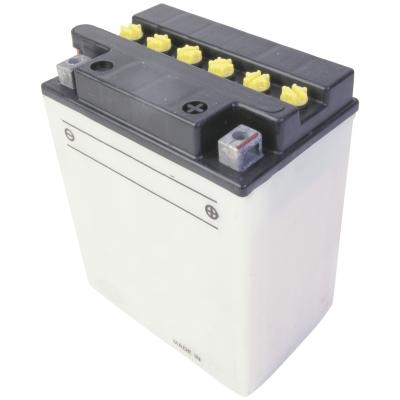
Battery problems can lead to a no-start or crank problem. In many of these cases, lack of maintenance is the root of the problem. Failing to fire up your engine could mean your 12-volt battery is bad. Although a close inspection may reveal a ruined battery, the actual condition of your battery may not be so apparent. In this case, perform a simple, inexpensive hydrometer test at home. Within a few minutes, you can tell whether you need to replace your car battery.
Disconnect the black and red cable terminals, in that order, from the battery with a wrench.
Put on your safety glasses and inspect the battery case and top for cracks, bulging or leaks. If you find any cracks on the case, one of the sides bulging or the battery posts damaged or leaking, replace the battery.
Add 2 tbsp. of baking soda to 8 oz. of warm water using a foam cup and stir the solution thoroughly. Clean the battery top with the solution and a soft brush, being careful not to let the water find its way under the battery vent caps. Wipe the solution with lint-free paper towels.
Remove the battery vent caps using a standard screwdriver as a prying tool and clean dirt and grime from around the filler holes.
Insert a cooking thermometer into the electrolyte to measure the liquid's temperature and make note of the temperature.
Get your hydrometer. Squeeze the hydrometer bulb and submerge the tip of the tool needle into the electrolyte in the first filler cap opening. Release the hydrometer bulb so that the electrolyte is absorbed into the cavity of the hydrometer tube. Raise the hydrometer to eye level and read the level of the electrolyte inside the tube against the graduated scale of the needle inside the hydrometer tube. Make note of this number.
Repeat Step 6 for each of the remaining five filler cap openings, keeping track of each cell reading.
For each 10 degrees below 80F (26.66C) in your temperature reading from Step 5, subtract 0.004 to each of your cells' reading in Step 6. For each 10 degrees above 80F (26.66C) in your temperature reading from Step 5, add 0.004 to each of your cells' reading in Step 5.
Determine the condition of your battery. If your readings are at 1.265 or above for each of the cells, your battery is in good condition. If the cell readings are below 1.265, your battery probably needs recharging. Battery charging at a low rate will help the cells regenerate. If any one of your cell readings differs from any of the other cells between 25 and 50 points, your battery is most likely ruined. Try charging your battery at a slow rate and retest the battery. If you obtain the same result, replace it.